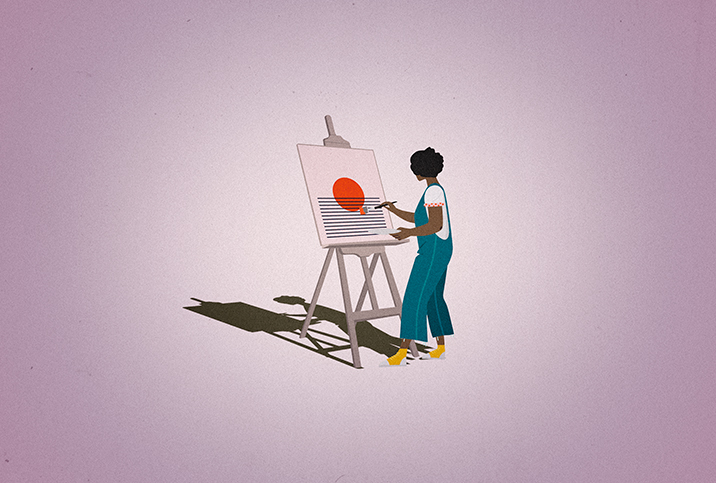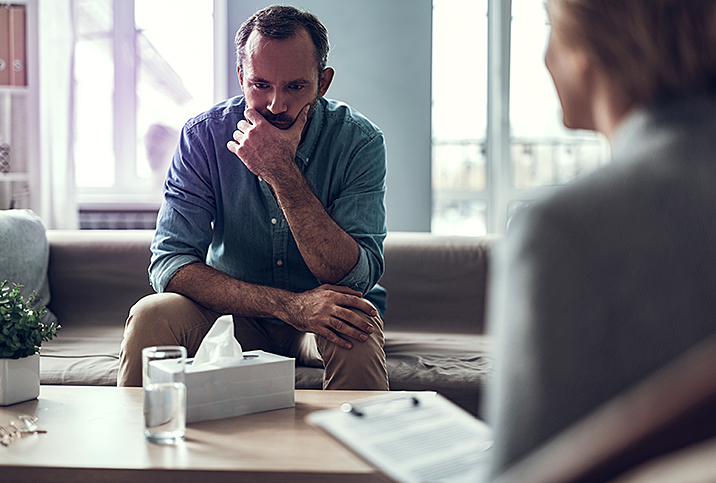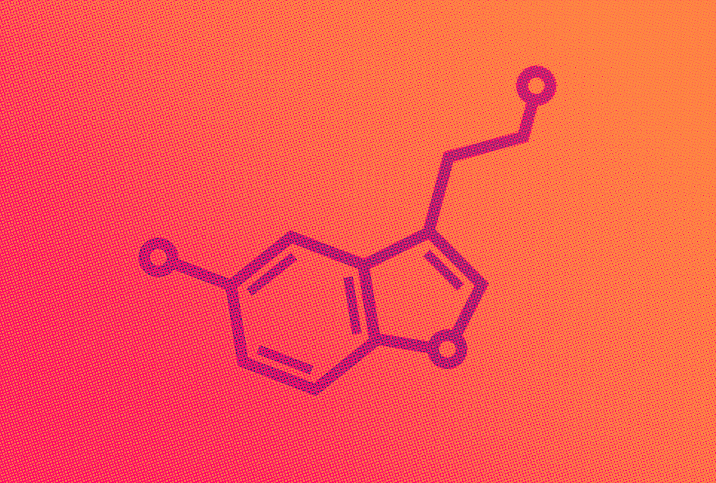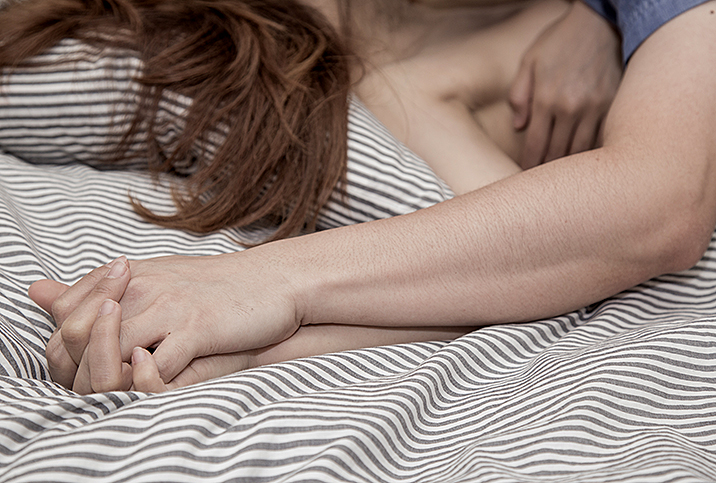Art Therapy Is a Creative Approach to Mental Health

For as long as humanity has been documented, art has played an important role in self-expression. But more than that, engaging in creative art courses could be linked with a decrease in symptoms of anxiety and depression, along with a boost in well-being, according to a research study conducted at the University of Gloucestershire and Cardiff Metropolitan University in the United Kingdom, and published in 2021 in Public Health.
Anxiety and depression affect our quality of life, our relationships, and the quality of our intimate moments and social interactions. Anxiety disorders are the most common mental illness in the United States, affecting 40 million adults ages 18 and older, according to the Anxiety & Depression Association of America. It is not uncommon for individuals with anxiety to receive a diagnosis of depression. Around one-third of people diagnosed with depression are found to suffer anxiety, too.
Although anxiety is highly treatable, only 36.9 percent of sufferers receive treatment. In the U.S., about 17.3 million adults ages 18 or older experienced at least one major depressive episode in 2017. It's expected those numbers have soared in the past two years since the onset of the COVID-19 pandemic in 2020.
In fact, Mental Health America's online screening data revealed that between January and September 2020, more than 500,000 people reported signs of anxiety and/or depression, with September marking the highest rate of severity since the start of the pandemic. Anxiety screenings went up 634 percent from January 2020, and depression screenings rose 873 percent.
The findings indicated more than 1.5 million people had taken the screening and looked for immediate resources and support on the organization's website.
Art therapy for all
Both depression and anxiety can be traced to deeper individual and social issues. Unique modes of therapy such as art therapy present individuals with a way to express themselves in unconventional ways if they're struggling with verbal expression, while providing a safe space for vulnerability through creativity.
According to April Li, an art therapist in Vancouver, British Columbia, who has been active in the field for nine years, art is a great tool and mode of expression for people who want to get to know themselves better and heal. During sessions with clients, most of whom are adults, she uses many types of media, including crayons, colored pencils, felt pens and paint, and sometimes even tangible materials or objects such as sticks, seashells, flowers, building materials and Play-Doh.
While there's a misconception that art therapy is specifically suitable for children since they have limited vocabulary, Li believes it's as effective for adults who have become accustomed to filtering themselves.
'Art really helps to bring someone in, to check with their core.'
"We're so used to a way of thinking and we internalize a lot of our experiences and feelings," Li explained. "So when we're talking, we're just in the habit of sometimes suppressing certain feelings or avoiding certain feelings. When we use very simple materials [and] images through that artistic process, it really taps into something that's a little bit deeper or even out of our everyday consciousness. We can then connect with our feelings, something that's more abstract, that's maybe more connected to the body, maybe not just directly to our 'logic' mind. So I can see so many adults can benefit from art therapy."
Since the pandemic began, Li has seen a number of adult clients with depression, anxiety, social phobia and struggles with family dynamics, which she attributes largely to working from home and spending lots of time around loved ones in much smaller spaces.
Self-awareness and sensory stimulation
Art therapy can help mitigate symptoms of anxiety and depression while enabling self-reflection among clients.
"Art therapy plays a special role with people who might be struggling with depressive symptoms or anxiety," Li said. "I think it's because a lot of times when we're talking, we go into this pattern of thinking, and it's so natural to us. We are so used to a particular way of thinking, it's hard to get out of a certain pattern, and we're so used to thinking only about solutions or a way out."
This pattern of thinking isn't always helpful in therapy, where the goal is often understanding more than problem-solving, Li said.
"Art really helps to bring someone in, to check with their core," she explained. "Not just beliefs, but it could provide so much insight that they start to bring their attention inward. And when you're able to find that strength that comes from the inside of you is relying on what's happening outside of you, that really empowers someone.
"Empowerment or finding that center in themselves…really helps to cope with a lot of situations where they learn to manage. I think beyond just managing, they actually feel more empowered and have an internal sense of stability," Li continued. "So on the outside, you can see how the symptoms of depression or anxiety would reduce or disappear."
'Empowerment or finding that center in themselves…really helps to cope with a lot of situations where they learn to manage.'
Depression is often associated with the feeling of losing a sense of oneself and can result in numbness. This is where art therapy can be a truly wonderful gateway to awareness, according to Sheida Shamloo, a Montreal-based art therapist.
"I think that artmaking itself is very soothing, because with depression, there's a lot of numbness," she said. "It's more cognitive numbness, where you know, nothing makes sense anymore. With art therapy, there's not much point to things. You just start with touching the material, for example. A lot of my colleagues will work with soft objects just because it feels good. And that's enough reason. Sensory stimulation is very effective for depression; so touching a feather just because it's soft. I personally also use scented markers with a lot of my clients."
On a similar level, she mentioned anxiety can trigger tunnel vision in a person.
"Your senses become limited, you go into that fight-or-flight mode; it's very primitive," Shamloo added. "So bringing your attention to the things around you can help with expanding your horizons when you're very, very tense."
A humanistic approach
Both Li and Shamloo agree one of the most important aspects of art therapy is its focus on the individual. It is often combined with other ways of treating anxiety and depression, including medication or counseling. Shamloo often encourages her clients to keep a "feelings journal," not as an assignment but as a safe, judgment-free zone that allows for emotions to be tangible and felt without any resentment or shame.
Most importantly, art therapy should be simple, like muscle memory. Shamloo explained art therapy does not require the individual to have a knack for creativity.
"It's something that they've already done in the early stages of their life, even if they're like a 60-year-old man who has never been good at art," she said. "Even picking up a pencil? Or paintbrush? Yeah, it's enough. We've already practiced it in happier stages of our life when we were younger and more playful and we were more true to ourselves. At that stage, we had not started conditioning ourselves yet. That's what makes art therapy more effective. You're creating things with the part of your brain that hasn't been jeopardized yet."


















